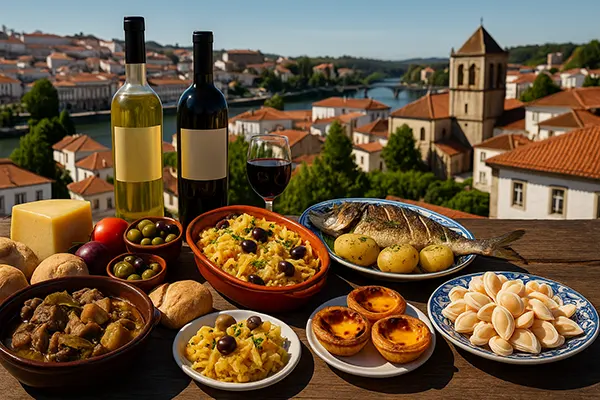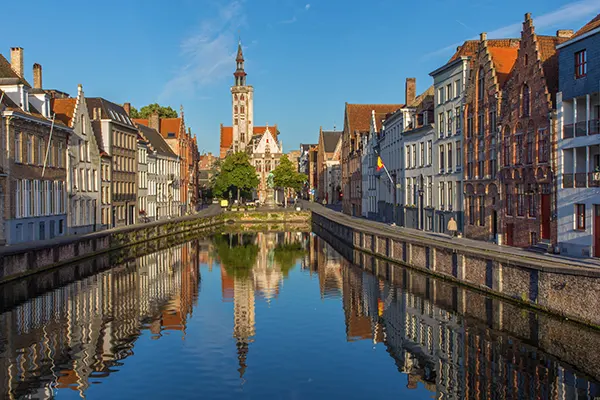
Portugal’s Culinary Map of Smaller Cities: From Coimbra to Aveiro
Portugal’s mid-sized and smaller cities hold a remarkable food heritage shaped by centuries of regional traditions, Atlantic influences, and strong local identities. Travellers who step beyond the usual routes discover towns where culinary craft remains tied to family knowledge, community gatherings, and seasonal produce. This overview offers an in-depth look at the gastronomic character of Coimbra, Aveiro and several nearby towns, highlighting authentic dishes, cultural spots, and practical advice for food-focused journeys.
Coimbra: Regional Cuisine and Academic Heritage
Coimbra’s culinary identity is closely linked to the surrounding Mondego valley, known for its fertile soils and longstanding agricultural culture. Local restaurants often highlight river fish, hearty stews and farm produce, reflecting a cuisine built around simplicity, precision and rural tradition. The city’s connection to its historic university also shapes the food environment through classic eateries that preserve recipes unchanged for generations.
A standard feature of Coimbra’s food scene is chanfana, a slow-cooked goat dish prepared in clay pots with red wine and aromatic herbs. It remains central to family celebrations across nearby villages and is often associated with winter gatherings. Another well-regarded specialty is lamprey rice, served in early spring when the species migrates upriver. Such dishes reveal the tight relationship between local gastronomy and the surrounding natural landscape.
Cultural experiences reinforce the region’s culinary reputation. The Machado de Castro National Museum, ancient university buildings and Roman ruins provide strong architectural context for visitors interested in understanding the city’s historic layers. Many taverns and wine houses focus on regional wines from Bairrada, a neighbouring zone known for bold reds and traditional sparkling varieties.
Where to Eat and What to Try in Coimbra
Travellers looking for genuinely local places can rely on neighbourhood tascas, small family-run establishments with straightforward menus. These venues often serve daily dishes prepared according to seasonal availability rather than fixed culinary trends. Asking residents for their preferred spots usually leads to reliable recommendations, as many families maintain longstanding ties with trusted eateries.
Sweet specialities deserve equal attention. Pastéis de Santa Clara and arrufadas carry a strong monastic background, as Coimbra’s convents historically played a large role in shaping Portuguese pastry culture. Today several bakeries continue to follow recipes documented in historic manuscripts, giving visitors access to desserts that carry clear historical continuity.
Food markets like Mercado Municipal D. Pedro V offer insight into regional produce, artisan cheeses, olive oils and cured meats. Visiting early in the morning provides the best chance to observe interactions between growers and shop owners. These markets are ideal places for travellers searching for regional ingredients unavailable in larger retail chains.
Aveiro: Coastal Traditions and Lagoon Flavours
Aveiro stands out for its maritime heritage and lagoon-based food culture. Salt production, fishing communities and traditional flat-bottom boats shaped the city’s everyday cuisine. Local dishes frequently showcase seafood, regional vegetables and ingredients preserved using long-established techniques such as drying, curing and salting. This coastal influence gives the city a distinct culinary personality compared with inland towns.
One of the region’s most recognisable foods is ovos moles, a delicate egg-yolk sweet wrapped in thin wafers or shaped into small marine figures. These sweets originated in local convents and continue to be prepared by specialised artisans. Beyond desserts, the area is known for caldeirada, a layered fish stew with potatoes, peppers and broth simmered slowly to deepen flavour. Both dishes illustrate the city’s preference for recipes tied to natural resources.
Aveiro’s cultural landscape reinforces the gastronomic journey. The Art Nouveau architecture, canals and traditional moliceiro boats create a distinctive environment shaped by local history. Museums dedicated to salt, maritime life and ceramics provide context for understanding the region’s craft traditions. Travellers interested in pairing food with culture will find a wide range of small museums and artisan workshops across the city.
Travellers’ Tips for Aveiro
For authentic meals, visitors can search for marisqueiras located away from the busiest canals. These seafood-focused establishments tend to prioritise fresh catches supplied by local fishermen. Menus often change according to availability, making them ideal for discovering truly seasonal dishes.
Another way to connect with the regional food scene is to visit the salt pans surrounding the lagoon. Several cooperatives offer tours that explain traditional harvesting techniques still used in contemporary production. These visits often include tastings of flor de sal, a delicate salt harvested manually from the surface of the pans.
Those seeking regional wines will find strong choices from Bairrada, located close to Aveiro. Many restaurants collaborate with family-run wineries to offer pairings built around classic dishes such as roasted suckling pig. Travellers can ask for local varieties like Baga reds or Bical whites to complement seafood or richer stews.

Smaller Towns Between Coimbra and Aveiro
The territory between Coimbra and Aveiro contains numerous smaller towns that preserve strong local identities and characteristic dishes. Mealhada, for example, is widely known for leitão assado, a traditional roasted suckling pig prepared in wood-fired ovens. Many establishments in the town maintain family recipes passed down through generations, ensuring consistent quality and a clear connection to regional heritage.
Another noteworthy stop is Águeda, recognised for its vibrant street art festivals and a growing culinary scene. Local restaurants integrate produce from surrounding farms, with menus emphasising seasonal vegetables, freshwater fish and regional cheeses. The town’s proximity to wine-producing zones makes it a convenient spot for travellers interested in pairing regional dishes with local wines.
The coastal town of Ílhavo is strongly associated with cod fishing heritage. Its Maritime Museum and codfish museum provide extensive documentation of Portuguese fishing voyages and long-distance navigational history. Restaurants in Ílhavo frequently specialise in bacalhau dishes, offering visitors a broad view of preparation methods still widely used in Portuguese kitchens.
How to Plan a Food-Focused Journey Through the Region
Travellers can structure their routes by combining gastronomic visits with cultural sites found along the way. Many towns maintain weekly markets where local growers sell vegetables, honey, bread and artisanal dairy products. These markets are not only culinary resources but also social spaces where regional traditions remain firmly present.
Relying on public transportation is possible, although renting a car gives greater flexibility for reaching rural restaurants and smaller villages. Roads between these towns are well maintained, and distances are relatively short, making it easy to explore several destinations in a single day. Travellers interested in wine may consider mapping vineyards across the wider Bairrada region.
Before planning restaurant visits, it is often useful to check regional tourism boards, as they frequently maintain updated lists of family-run establishments and special events related to local cuisine. Seasonal festivals dedicated to seafood, meat dishes or regional sweets can offer valuable insight into the area’s culinary identity and provide opportunities to engage with community traditions.




